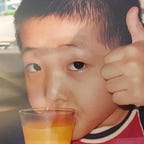PATTERN IS L*FE: Documentation
Is inspiration research? Do we sacrifice process for progress? Where style is king, can designers also tap into the past to make new?
Inspiration
For this research project, I was inspired primarily by Leland Maschmeyer’s 2020 Insights Design lecture at the Walker Art Center, just before COVID-19 really hit the States.
I really appreciated the meta-conceptual approach on patterns in terms of culture and behavior as well as a personal absorption and adaptation of history, as these are themes that have intersections in what I’m interested in with design: language, storytelling, and community-building. It was doubly-added value since I’m super enamored with the Chobani rebrand case study, and I was always curious how they were successful with connecting with their audience.
One pattern I’ve noticed in my own design practice I have no problem with considering big-picture items, but I struggle with the act of making and where to start.
I’m really glad that I have started to see how I can propel myself to make by organizing content and making it easier on myself to gather my thoughts. I’ve been particularly drawn to Are.na as a medium for simultaneous inspiration and sequencing for how I might present my ideas.
Process
With reference to my own Are.na channel for the project, I sectioned off my video into three parts as questions that I have with regards with tackling patterns at different scales. My three questions for exploration were:
- What are the structures of patterns?
- Can the tension between pattern and progress result in the compromise of both?
- Where can pattern represent life?
I was also inspired by the other artists/designers/community makers that I was posting about week to week, and realized I could reference this culmination of work and pull threads at what I was inspired by. A strong example of pattern as life was Wing On Wo Co., a pottery shop in NYC Chinatown, and their inter-generational source of vitality and resiliency. In a lot of ways, their own dilemmas were on how to break away from stale and negative structures to inspire everyone.
To me, the video was also an exercise for pulling this expansive catalog of influences that Leland was bringing up, and using a combination of his examples and mine to hone into a vignette.
“Artists return to pattern, and return pattern” — Leland Maschmeyer
